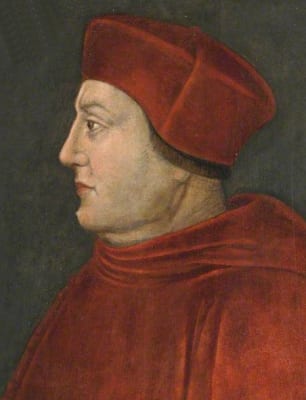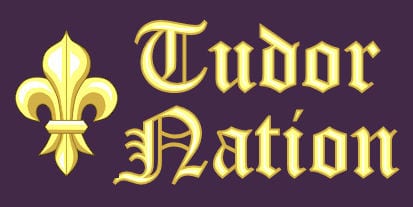The Treaty of London, 1518, also known as the Universal Peace Treaty, was a significant diplomatic agreement in European history. It was an attempt to create lasting peace among the major powers of Europe, preventing them from further military conflict by forming a collective security agreement.
Contents
Background
Negotiators
Key Points of the Treaty
Main Signatories
Significance and Outcome
Background
By the early 16th century, Europe was engulfed with conflicts between the major powers mainly over territorial disputes, dynastic rivalries, and religious conflicts. The principal rivals were:
Francis I (France) and Charles I (Spain) – over control of the Italian states.
Henry VIII (England) and Francis I (France) – over land in France and a personal rivalry.
The Ottoman Empire under Suleiman the Magnificent was also expanding into Europe threatening culture and religion.
To stop the expansion of the Ottoman Empire, Pope Leo X called for the leaders of Europe to unite in a Crusade against Suleiman. However, many leaders feared that if they were absent from their countries it would increase the risk of invasion.
The solution was for the major powers of Europe to agree a peace. The Treaty of London, signed on 3rd October 1518, sought to unite Christian European monarchs in a non-aggression pact which would increase the stability of Europe and enable a combined defence against Ottoman expansion.
Negotiators for the Treaty of London

The main negotiator of the treaty was Cardinal Thomas Wolsey of England, chief advisor to King Henry VIII. Wolsey took the initiative in designing this ambitious project and acted as an intermediary between the different monarchs. His aim was to elevate his position as a major statesman, and England’s standing as a key diplomatic power.
Wolsey negotiated extensively with the leading monarchs of the day, including:
Henry VIII of England, Francis I of France, Charles I of Spain (who would become Holy Roman Emperor in 1519) and Pope Leo X.
What were the Key Points of the Treaty?
The Treaty of London sought to create a framework for lasting peace in Europe, and its clauses reflected this goal. Here are the key points of the treaty:
Mutual Non-Aggression Pact:
All signatories agreed not to wage war on each other. The idea was that if any one of the signatories was attacked, all the others would come to their aid by declaring war on the aggressor, thus creating a system of collective security.
Strong Defence Against the Ottoman Empire:
Although not explicitly mentioned, the treaty had the underlying goal of uniting Christian Europe against the Ottoman Empire. This was especially important to Pope Leo X, who saw the expanding Ottoman Empire as a significant threat to Christian territories.
Recognition of Territorial Integrity:
The treaty sought to recognize the existing borders of European states, with the aim of discouraging territorial disputes that could lead to further wars.
Freedom of Trade and Diplomacy:
A system of open diplomatic and commercial relations between the signatories was envisaged with trade routes remaining safe and unimpeded.
Universal Peace in Europe:
The terms of the treaty (outlined above) aimed to put an end to the constant wars in Europe and establish a lasting peace where countries respected the others’ borders and lived in perpetual peace.
Papal Authority as Mediator:
Pope Leo X was positioned as the ultimate arbiter of disputes between Christian states. This strengthened the papacy’s role in maintaining peace among Catholic monarchs.
Who were the main Signatories of the Treaty of London?
The Treaty of London 1518, was signed by nearly all the major powers of Europe at the time, which was an unprecedented achievement.
The main signatories were:
England and France – Henry VIII, Thomas Wolsey and the French ambassadors signed the treaty and swore an oath to uphold the terms of the treaty in St Paul’s Cathedral on 3rd October 1518
The following countries ratified the treaty. Signatories and dates included where known:
The Holy Roman Empire – Charles I on behalf of his grandfather Maximillian I in December 1518
Spain – Charles I in December 1518
Burgundy and the Netherlands – Charles I – date not recorded but likely in December 1518
The Papal States – Pope Leo X – date not known
Scotland – James V – date not known
Portugal – Manuel I – date not known
Denmark and Norway – King Christian II – date not known
The Swiss Confederation
Hungary
Venice, Florence, and several other Italian states
Significance and Outcome
The Treaty of London was a bold diplomatic effort, and arguably Thomas Wolsey’s greatest achievement, that, for a brief period, seemed to bring stability to Europe.
It established England as a key diplomatic player and showcased Cardinal Wolsey’s skill as a statesman.
However, despite the treaty’s grand ambitions, it was short-lived, as European politics quickly returned to conflict.
By 1521, tensions between Francis I of France and Charles V of the Holy Roman Empire reignited, leading to the prolonged Italian Wars. England allied with Charles against France the same year.
Conflict re-ignited between Denmark and Sweden in 1520 when King Christian II sought to gain control of Sweden.
Conclusion
While the Treaty of London 1518 failed to establish a lasting peace, it was one of the earliest multilateral peace agreements in European history, demonstrating a genuine attempt at diplomacy and international cooperation.
Though short-lived, it remains a significant event, illustrating ambitions of peace in an era of constant conflict. It also marked a key moment in Cardinal Wolsey’s career as a diplomat and established England as a major European power.
Published September 12, 2024 – Updated – September 12 2024
Harvard Reference for this page:
Heather Y Wheeler. (2024 – 2025). Treaty of London 1518 Available: https://www.tudornation.com/treaty-of-london-1518 Last accessed April 15th, 2025
